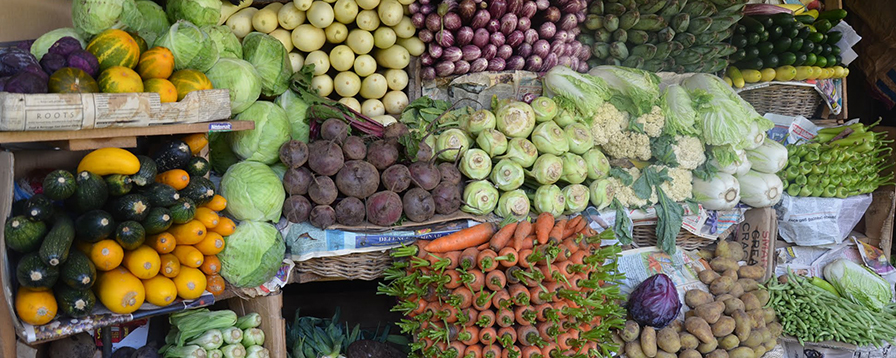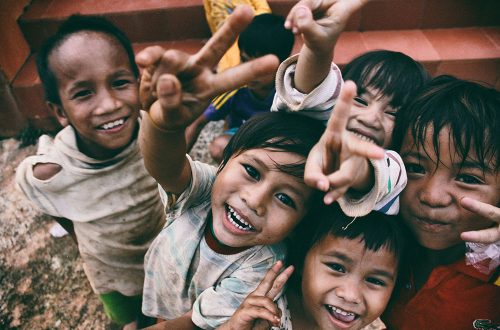As good traveller, you obviously ask the question: but what do we eat in Sri Lanka? And you are right, discovering a country is discovering new landscapes, new faces, a new culture and new flavors … sometimes spicy!
Here is a small overview of what you will probably taste during a trip to Sri Lanka:
Rice & Curry
We start with the “rice and curry” because it is the must-have dish of the country. We could even say the national dish. Sri Lankans eat rice and curry at almost every meal. But beware; the “curry” has nothing to do with the curry powder, the mixture of yellow spices, which we know in France. A curry is a generic term for a wide variety of sauce preparations (sometimes very spicy!) In which we often find cumin, coriander, pepper, turmeric, coconut milk and peppers.
If you order a “rice and curry”, expect to receive a dish of white rice with 2 to 6 small dishes, the “curries”. These are often vegetable preparations such as eggplant, sweet potatoes, coral lentils (dahl), chickpeas, potatoes or squash, depending on the region. But also, more surprisingly, the curries can be based on jackfruit or lady fingers (okra), a kind of bean with a gelatinous texture.
You will certainly find also, to accompany all, a mango chutney, sambol (a mixture of onions and chillies with grated coconut) and papadams (a kind of chips made from lentil flour ). Finally you can choose to accompany your dish with a curry of fish or meat (mainly chicken).
Note that a “real” rice & curry is eaten with your fingers!
Biryani
Biryani is derived from the Persian word beryā meaning “fried” or “grilled”. It is a dish that was imported to the Indian subcontinent by Arab merchants (between the eighth and fifteenth century). It is a very fragrant rice prepared with spices, vegetables and sometimes it can be garnished with cashews. It can be vegetarian or accompanied by chicken, mutton or a hard-boiled egg.
Egg roti
It is a kind of thin crêpe often folded in square, stuffed with an egg. This dish is available almost everywhere and guaranteed non-spicy! There are also “vegetables rotis” and “fish rotis ” but these are usually spicy. The manufacture of these “pancakes” is astonishing, it is not like in France liquid paste, but small balls of dough that are flattened and stretched on a hot plate.
Coconut roti or pol roti
This is a small thick cake made with a little coconut (sometimes the taste is not very present). Sri Lankans often eat it in the morning or evening. They eat them with lunumiris, a mixture of onions and chilies or coconut sambol, softer, it is always onions and peppers but with lots of grated coconut. They can also be served with dhal (coral lentils) when you request a Sri Lankan breakfast.

Kottu roti
This dish, available only in the evening, is one of the most appreciated dishes by Westerners. These are finely cut wheat cakes mixed with vegetables, onions and different spices. The cutting of the pancakes is done with the help of metal blades directly on a hot plate where the dish cooks, you will certainly hear this typical noise in many stalls! Very rich, the kottu is a dish inspired by a specialty of South India. It can be vegetarian, with chicken or fish.
Hoppers
Hoppers are a kind of rice flour pancakes, which are cooked in a small special pan with a curved bottom. Once cooked, the “pancakes” have the shape of a bowl, whose bottom is rather thick and very thin edges. They are tasted (we use this word because the Sri Lankans are fond of it!) Sometimes without anything else to accompany them, often with an egg (egg hopper) or while accompanied by more or less spicy sauces.
The string hoppers have the only similarity to be made from rice flour. These are fine noodles that are usually eaten with dahl or sambol.

Fried rice / fried nooddles
Fried rice and fried noodles are not native to Sri Lanka, but they are two dishes found throughout Asia. During a trip to Sri Lanka you will certainly eat, and for a ridiculous price. Served with vegetables, they can also be served with scrambled eggs or chicken.
Lamprai
Very popular and very cheap, Lamprais is a spicy rice served with vegetables, a boiled egg and meat. This dish, which has been influenced by the Dutch, has the particularity of being cooked in a banana leaf, which gives it a special flavor. Moreover “lamprais” comes from a Dutch word that translates as “a pack of food”.
Patties / Samosa / Cutlets
The patties, like the samosas are snacks very often served with a tea. They can be stuffed with vegetables, some spicy, fish or chicken. Both fried, the patties are in the form of small slippers while samosas are generally triangular.
Cutlets are croquettes (or “cromesquis” for top chef fans!) Which, once again, can be garnished with vegetables like meats or even with egg. You will eat instead with a “rice and curry”.
Fish and seafood
If you are a fish lover, you will have the opportunity to have fun on the island. You can, especially near the coast, eat many freshly caught fish (and even go fishing for them yourself!). Most often grilled, it is possible to taste them naturally, with a garlic sauce or devilled (very spicy). At the beach, some small restaurants expose fish and seafood on a stall, you just have to choose. Tuna, snapper, barracuda but also shrimps and crabs, you will certainly find your happiness!
Meat
Meat is not the strong point of the island’s gastronomy. The quality of the meat in Sri Lanka is generally quite poor, often overcooked and almost always prepared in sauce. The majority of the population is Buddhist, so many of them are actually vegetarians (even vegans). Chicken is by far the best meat you can find in Sri Lanka, except if you eat in big hotels / restaurants where most of the meat is imported.
Desserts
Curd
The curd is a must dessert in Sri Lanka. This is a yoghurt made from buffalo curd very close to our “cottage cheese”. You will certainly eat it with honey or kitul, a sap extracted from a palm tree called Caryotaunrensou.
Watalappam
The Watalappan is a popular dessert at weddings and religious festivals, particularly appreciated by the local Muslim community. This is a delicious coconut flan, sometimes with some cashews. It is made with many spices, including cardamom, clove, nutmeg, vanilla or pandan, a tropical plant used to subtly flavor dishes.
Fruits
Sri Lanka is obviously an ideal country to feast on exotic fruits. You will easily find pineapples, mangoes, delicious little bananas, passion fruit or avocados (we recommend you try the avocado juice!). You will also discover many other fruits that are not found in Europe or any other Western countries and whose tastes are sometimes surprising such as: mangosteen, papaya, rambutan (kind of hairy lychee), durian, dragon fruit or even the wood-apple (very hard fruit whose taste is slightly acidic).
And for drinks?
Tea
Tea is obviously the drink of Sri Lanka. The Sri Lankans consume it with milk and very sweet, because it is a very strong tea (you will learn more about tea by visiting a factory!). Sometimes, and it’s even better, spices are added to make a famous “masala chai”.
Coconut water, called “Thambili”
Impossible to spend holidays on the island without tasting a coconut. You will see that the juice is very refreshing and you can, once the juice is drunk, scrape the inside to taste the fresh coconut.
Beer
Lion Lager is a beer produced in Sri Lanka. It’s a pretty good and very nice blonde beer after a nice sunny day. You can find imported beers but they are more expensive.
Arrack
Arrack is an alcohol that comes from the distillation of unopened coconut blossoms. It can serve as a base for fruit juice cocktails, but is traditionally tasted alone like rum. The locals also mix it with sparkling water or ginger beer, a popular soda in Sri Lanka (it’s even better with some honey and lemon!)
Attention, the days of full moon, called “poya” the sale of alcohol is prohibited, including in the hotels …
And if you want to discover all this for yourself, and even learn how to cook Sri Lankan, know that we offer many customizable tours including a culinary trip.





Mark Sufi says:
Hi there
Why is the meat section in a foreign language and the rest in English
Aurélie Leclercq says:
Hello, it’s mistake, we will fix that 🙂 Thank you
Roger Tapping says:
I lived in Sri Lanka as a young boy and returned for the only time in 1999.
I plan to take my wife there and show her the beautiful island
Aurélie Leclercq says:
Hi there ! That’s a great idea ! We can help you organize your trip to Sri Lanka, send us a message to info@maiglobetravels.com 🙂